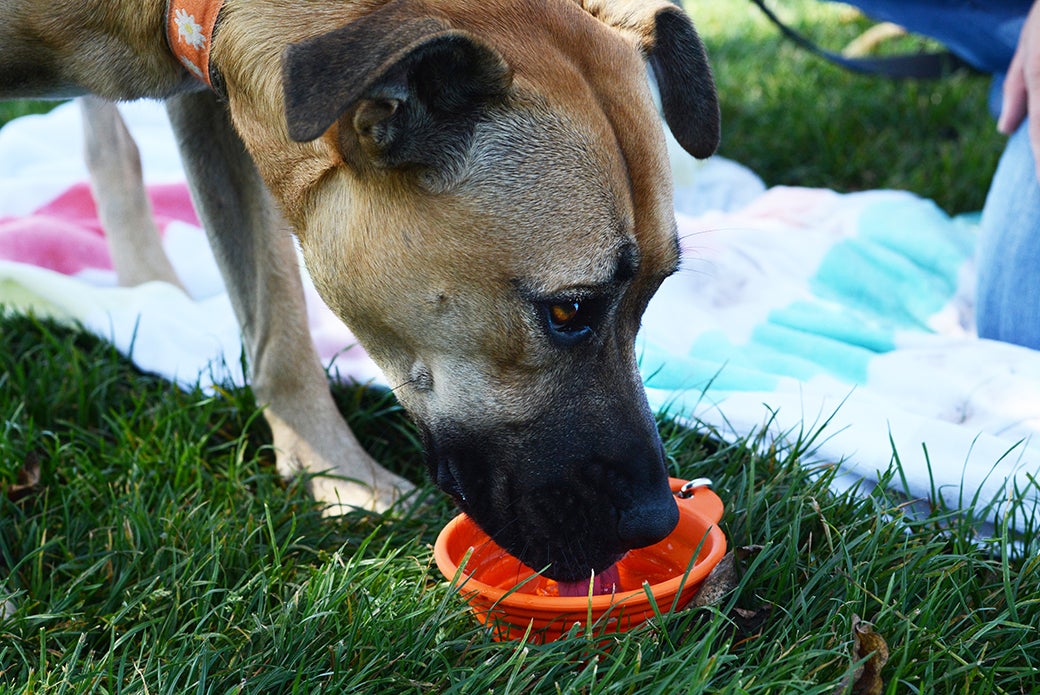blog_apcc-pools_071619_main.jpg


With summer weather comes the opportunity for our families (including our furry friends) to spend more quality time outdoors. Waterside activities are summertime favorites for beating the heat, but the ASPCA Animal Poison Control Center (APCC) wants to make sure we’re keeping our animal buddies safe before taking the plunge.
Bring Drinking Water
blog_apcc-pools_071619_body1.jpg


Water play is a particularly effective way to beat the heat. But be sure to take plenty of fresh, potable water with you. Lapping up pool water or water found outdoors could create a hazard for your pets.
Pool water contains chlorine and algicides to make the water suitable for swimming. These chemicals are usually greatly diluted in the pool itself and will only result in stomach upset if large amounts are consumed. But the undiluted pool chemicals (algicide, pool shock and chlorine tablets) are extremely corrosive, and if ingested will cause severe ulcers in the mouth, throat and esophagus. These can even become life-threatening.
Keep Your Poolside Products and Beverages Out of Paws’ Reach
blog_apcc-pools_071619_body2.jpg


Products we use to keep ourselves safe outdoors—specifically, sunscreens and bug sprays—don’t always work for our pets. Both products may contain chemicals that could be harmful to pets both when ingested or applied on their skin. Don’t use any sunscreens or bug repellants on your pets unless they are specifically marked as safe for animals. When lounging outside or participating in outdoor activities, be sure to put your products away securely after use.
Also, if you’re enjoying a few alcoholic beverages by the pool, be sure to keep your drinks up and away from any curious noses and clean up any spills before your pet decides to lap them up.
Never Leave Your Pet Unattended by the Pool
blog_apcc-pools_071619_body3.jpg


It is best to never leave your pet unattended by your pool. Even if your pool is covered, pool covers themselves can be a safety hazard if your pet falls in and slips beneath the cover. If this were to happen, you pet could become disoriented, and animals often lose their lives while trying to climb out. Consider a safety cover to prevent this hazard from leading to tragedy.
To further protect your pets, you could consider using pool alarms or pool turtles (a device that the pet wears on the collar that sounds an alarm when it gets wet) to protect your pet and alert you if they are in trouble.
Outdoor Water Sources Can Bring New Concerns
blog_apcc-pools_071619_body4.jpg


Lakes and ponds that are pet-friendly are also great places to cool off. But these destinations can be the homes of some lesser-known pet hazards.
Blue-green algae (cyanobacteria) often grow in still water under certain temperature and humidity conditions. Look for posted signs before allowing your pet in the water and be sure there are no signs of it where your pet is going to swim. Blue-green algae are often light green to dark green in color and sometimes a reddish brown. They become blue-green as the algae deteriorates.
Many of these algae will cause severe gastrointestinal signs, and they may cause other severe symptoms such as:
- Impaired balance or coordination
- Tremors
- Seizures
- Coma
- Paddling
- Shock
- Pallor
- Liver failure
- Bluish or grayish color of the skin, nails, lips, or around the eyes.
- Difficult or labored breathing
- Weakness
- Death
Stay Alert When Oceanside
blog_apcc-pools_071619_body5.jpg


Similarly, the ocean contains risks to our furry friends. Shellfish, starfish, sea urchins and dead fish all pose potential toxic risks to your pet if consumed, and in some areas of the country, red tides can produce eye and respiratory irritation, gastrointestinal upset and symptoms in the central nervous system. Be alert to the things washed up on shore and pay attention to hazards below the water’s surface to prevent your pet from picking up, or getting injured by something you may not be able to see.
Additionally, a dog who spends too much time chasing and trying to catch the waves may consume too much saltwater. This will lead to severe increases in the sodium levels of the blood (hypernatremia). Hypernatremia leads to vomiting, increased thirst, difficulty walking (ataxia) and even tremors and seizures. Left untreated, this could be fatal. Be mindful of how much saltwater your pet is consuming and make sure that they have access to plenty of fresh drinking water throughout their time on the beach.
It’s also important to gauge general water conditions to prevent your pet from becoming trapped in rip currents, undertows or fast-moving water.
A little bit of attention to these hazards, and remaining watchful as you and your pets enjoy the summer sun, can save you an unexpected visit to the emergency vet. Be sure to keep these hazards top-of-mind as you settle into the sunshine with your furry best friends.
Source: Read Full Article



